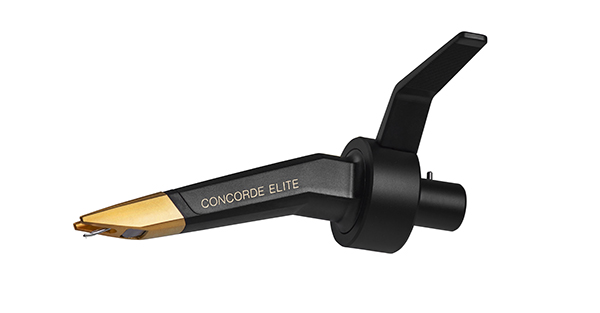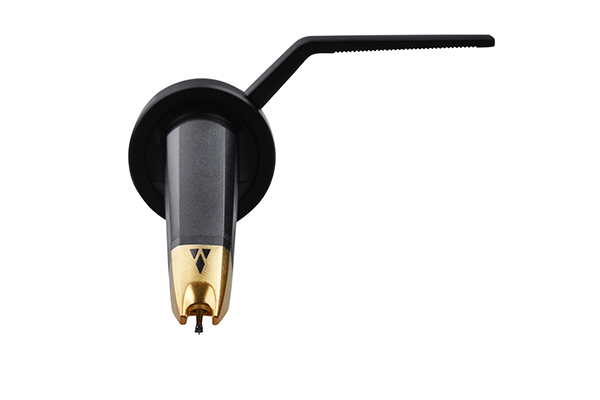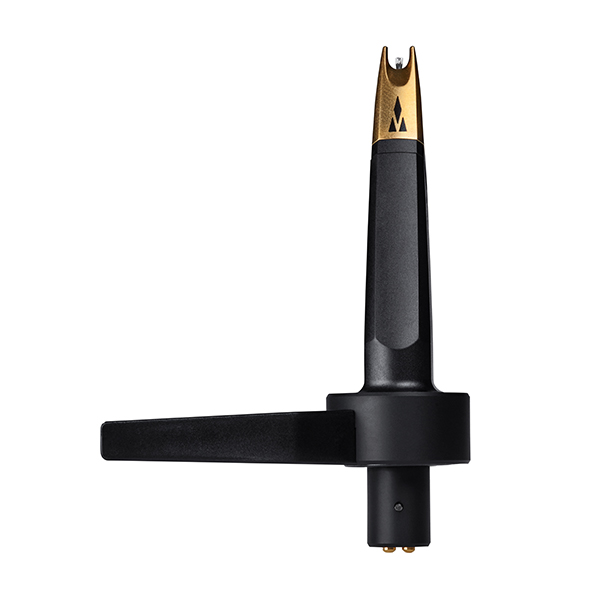I have an Ortofon Concorde Century and it is a gamer!
Insider Report: Ortofon Concorde Elite Moving-Magnet Cartridge Seeks to Live Up to Its Vaunted Name

When it comes to making elite MMCs, Ortofon knows a thing or two about coming up with an elite thing or two. To wit: the company’s new Concorde Elite is a premium moving-magnet cartridge based on the legacy of the well-respected Ortofon Concorde MkII series — and the Concorde Elite MMC sports an SRP of $439 to boot.

The Concorde Elite features a new, special-molded stylus body with gold plating, and you can see just how classy it looks all throughout this story. Encased by the gold is a Nude Elliptical diamond stylus, mounted on a rigid aluminum cantilever. This Nude Elliptical diamond stylus delivers a smaller moving mass for (Ortofon’s words now, in quotes), “improved and detailed sound quality.” The slim profile of the Nude Elliptical diamond is said to enable it able to follow groove oscillations more accurately, extract more intricate details, and track the highest frequency information.

Recently, I chatted directly with Louis Dorio, product specialist for Ortofon, to find out more about the company’s intriguing new Concorde Elite MMC. “It’s really designed to work best with Technics SL-1200 turntables, and it’s sort of new territory for us,” Dorio told me before adding, “the Elite will work with any S-shaped tonearm. It’s easy to setup, and it sounds good. Most of the time, Concorde models have been reserved exclusively for DJ use — but this time, our focus was to offer features like hi-fi performance and a nude stylus.”

A few words now about the Elite’s cantilever and coil system. According to Ortofon, the properties of the 750µm aluminum-magnesium cantilever that was exclusively developed for the Concorde Elite is said to ensure the stylus picks up the groove vibrations with a stable and accurate trace performance, and provides the ideal interface between the stylus and armature. (Note: The company tends to use an all-caps designation for ELITE, but we’re going with “Elite” here on AP.)
A specially developed coil system in the armature transmits the diamond’s movements. To ensure tracking performance, a new rubber suspension was also developed for the Concorde Elite to convey music in “the most lifelike manner” while “paying close attention to damping of excess brightness” (the quoted phraseology here is again in Ortofon’s parlance).

A full array of the Ortofon Concorde Elite MMC’s specs are below. You know, it sounds like we here at AnalogPlanet should get a review of the Ortofon Concorde Elite cartridge in motion right away — and, in fact, we have indeed already done just that, so stay tuned for our full review in the near future.
In the meantime, if you’re interested in finding out how to get a Concorde Elite MMC of your own, you can find an Ortofon dealer near you right here.

ORTOFON CONCORDE ELITE
MOVING-MAGNET CARTRIDGE (MMC)
SRP: $439
Specs
Stylus Type: Nude Elliptical
Cartridge color (body/stylus): Black/Gold
Replacement stylus unit: Elite
Frequency range: 20 – 20,000Hz
Output voltage at 1000 Hz, 5cm/sec: 8.5 mV
Channel balance at 1 kHz: 1dB
Channel separation at 1 kHz: 25dB
Channel separation at 15 kHz: 15dB
Tracking ability (at 315Hz, at recommended tracking force): 100μm
Compliance, dynamic lateral: 13μm/mN
Stylus tip radius: r/R 8/18μm
Tracking force range: 2.0 - 4.0g
Tracking force (recommended): 3.0g
Tracking angle: 20°
Internal impedance, DC resistance: 1.2kOhm
Internal inductance: 800mH
Recommended load resistance: 47kOhm
Recommended load capacitance: 150 - 400 pF
Cartridge weight excluding screws: 18.5g

- Log in or register to post comments


I wanted to check out the magnesium version of their arm, so got that table.
(I have yet to use it with Schick and JELCO arms waiting to be attended to.)
I think this cartridge has an "up" quality to it....I am not an official reviewer, so I can use 'un-precise' language.
Examples:
On a DG favorite of mine, Haydn 88 and 89 on the same LP (!) it gives great song the the upbeat string sections, lively and involving.
John Prine's "In Spite of Ourselves" it seems a tough like a Shure V-15 V MR I like....and blends into the sonic palate of that cartridge with the different JICO styli. I think Art Dudley would have compared this sound to a round styuls GPU. There is likely a touch of detail it might pass over, but it keeps the tempo, so to speak. Imaging is good.(I can't recommend the fun of playing with the different JICO styluses enough, great fun.)
However, on Massive Attack's "Teardrop," I can still hear record noise that isn't much different than other cartridges.
On that table, I have also compared it with Charisma Reference II (MC), Ortofon A-95 (MC), a Crealaudio Maestro V2 Ebony (MM)and an Acoustical Systems Fideles (MM).
They are all a little better at 'relaxed' detail, but the Ortofon is the most interested in a party. It's hard to describe, some people love it, and others find it a bit bright. (If I had to really adjectivize...perhaps not the dynamic contrasts of the others.)
(All of this may kind of be output related, too. The Concorde is an easy driver.)
I think it sounds much like the 2M Black.

So true on the sound different JICO styli exhibit. This past weekend I installed a Tangerine Audio Phoenix SME cut aluminum sub-chassis for my LP12. Once installed, it surprised me at how more transparent everything was, but so too were the occasional pops and ticks on the record. I swapped the more expensive JICO VN5MR styli, which is around $400, for the cheaper $270 JICO VN5MR, and the sound wasn't as bright; it was like the original Shure V15 MK V MR stylus, a little closed, not bright and silent with surface noise. Which do I prefer? I don't know; on some recordings, it is magical in the amount of inner detail it brings up others, not so much. Don't let anyone say the more expensive JICO styluses don't make a difference. Paired with the right equipment, it can be revelatory. It took a Linn LP12 Keel competitor sub-chassis to bring this out.

I must admit, when I see a the "form factor" of that Concorde Elite MMC, I instantly think:
Not Adjustible.
“It’s really designed to work best with Technics SL-1200 turntables"
This makes me wonder about the 1200's arm geometry.
"Back in the day" I owned a belt-drive SL-23 and the hollow-plinthed, cast-aluminum SL-1100A - both manufactured circa 1972-1976.
The stock arms were "incorrect" - in that to acheive the "standard nulls" (66.0, 120.9 mm) one had to mount the pickup "crooked".
A followup seems to be in order - to estimate the null locations for the SL-1200/Concorde Elite MMC combo.




















































